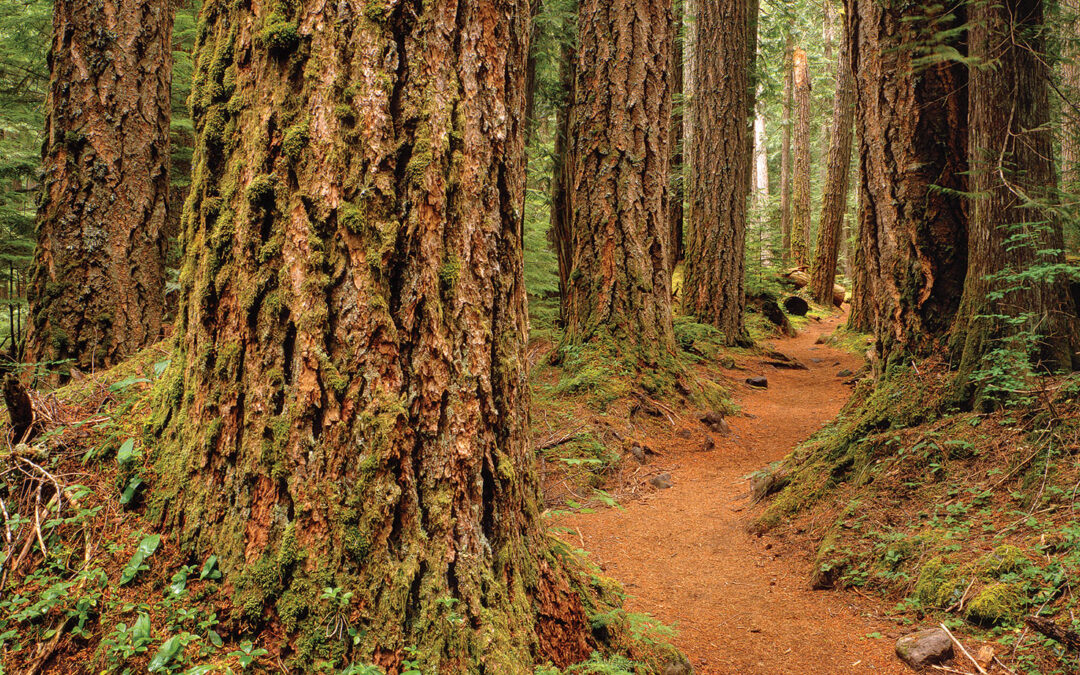The Northwest Forest Plan — the world’s largest ecosystem management plan — was adopted in 1994 after President Bill Clinton essentially imposed the Plan on the Forest Service and other reluctant federal agencies. Of the Washington, Oregon, and California lands affected by the Plan, 19.4 million acres (79% ) are on national forests.
Operating within the Agriculture Department, the Forest Service bureaucracy has, in Andy Kerr’s estimation, “chafed under a plan that it never wanted and would never have created on its own.” Now, the USDA has assembled an advisory committee to guide the process of amending the landmark plan with the goal of “modernizing landscape management.”
The Northwest Forest Plan was developed after court rulings found the Forest Service bureaucracy guilty of flaunting federal law. Various federal courts found the agency’s clear-cut logging of old-growth trees to be in violation of the Endangered Species Act, the National Environmental Policy Act, and National Forest Management Act. With these rulings, national forest logging dropped 80%, to a level at which it remains.
Clinton convened a forest summit in 1993 soon after taking office. The ensuing scientific review and planning process (in which FSEEE Executive Director Andy Stahl played a role) produced the Northwest Forest Plan. In the end, the Plan provided for:
- 6.5 million acres of late-successional (old-growth) reserves (LSRs).
- 0.1 million acres of “managed” LSRs.
- 2.1 million acres of “riparian reserves.”
- 1.5 million acres of “adaptive management areas.”
- 3.28 million acres for logging.
7.25 million acres were already protected as wilderness areas or wild and scenic river corridors. Other key requirements of the Plan are:
- The designation of “key watersheds.”
- A requirement for “watershed analysis.”
- A requirement to “survey and manage” for threatened and endangered species prior to logging.
In August 2023, a team of scientists with the U.S. Geological Survey, the Forest Service, and Oregon State University published a report based on a quarter century of data collection at more than 1,000 sites in 219 watersheds protected under the Northwest Forest Plan. The report documents “steady improvements in watershed condition” resulting from “broad-scale forest recovery combined with targeted forest, road, and stream management under the Northwest Forest Plan.”
The landmark plan has proven successful in large part because it includes measurable standards that must be met. But the 2012 Forest Service Planning Rule redefined standards and guidelines in ways that give agency bureaucrats latitude to operate within standards as long as their decisions can be defended as “help[ing] achieve or maintain the desired condition.” Guidelines are no longer enforceable, and the 2012 Rule was developed under Agriculture Secretary Tom Vilsack, who currently serves in the same position.
Updating the Plan will require an environmental impact statement and opportunities for public comment. Reports, comments and timelines will continue to be posted on the Forest Service website at shorturl.at/noBIL.
Photo: Old-growth Douglas-fir trees remain in Oregon’s Willamette National Forest due in large part to protections implemented as part of the Northwest Forest Plan.


